Premise
It was reported in Nov 2019, that after having tested the Integrated Battle Group (IBG) concept (explained later) both in the Western, as well as, the Eastern theatre, the Indian Army will be operationalising the IBGs in the field force sometime in early 20201.
This article argues, that unless some critical components are made integral to the IBGs, its survivability to fight another day cannot be ensured. There are voids in this context which must attract the attention of decision makers. The article aims to flag the same and suggests a way ahead for building the required capability to ensure survival of the IBGs in the face of contemporary threats.

What is IBG?
IBG as a concept has gradually matured over time. Starting from the experience of Operation Parakram undertaken in the aftermath of the attack on Indian Parliament in Dec 2001, where it reportedly took nearly three to four weeks to mobilise 500,000 troops and three Strike Corps with nearly 400 casualties in minelaying, a need was felt for building a capability for a quicker mobilisation and swift offensive action from a ‘cold start’.
A lot has been said about the existence or otherwise of the so called Cold Start Doctrine (CSD) which essentially involves various branches of the Indian Armed Forces to conduct swift offensive operations as a part of Unified (Integrated) Battle Groups.
In 2011 the then Army Chief stated, quote, ‘there is nothing like cold start. The forces have a ‘proactive strategy’ which takes steps in a proactive manner to achieve our goals’ unquote.2 However in 2017, the present Army Chief acknowledged the existence of country’s Cold Start Military Doctrine3.
Denials or acknowledgements notwithstanding, the general understanding of CSD in the open source is to build nimbler integrated units which could be stationed close to the border and which are capable of taking swift offensive action in a limited war scenario before international forces demand a ceasefire or before so called nuclear threshold is crossed. Such a requirement was plainly evident after the mobilisation debacle of Operation Parakram which allowed the adversary enough time to bulk up its defences, raising the costs and stakes of incursion4 . So much for CSD.
Siezed with the above basic issue of mammoth conventional forces slumbering in to action in an unacceptable timeframe, there was a Study carried out in 2018 at the level of Army Commanders which basically aimed to suggest restructuring of forces to meet the future challenges.
The Study suggested restructuring of the field force into brigade and division sized forces comprised of all arms (infantry, mechanised infantry, armour, artillery, air defence, engineers, signals) duly supported by logistic elements integrated with the above. Each of this grouping referred to as Integrated Battle Group (IBG) was recommended to be placed directly under the Corps Headquarter.
The IBGs were to have a flexible composition based on the type of terrain, prevalent threat and the task at hand. The strength of a typical IBG could be more than a Brigade (around 5000 troops) and less than a division (around 15000 troops).5 Being integrated and self-sufficient entities placed closer to the borders, IBGs were expected to swing into action in a much shorter time frame and be ready to strike hard and quicker across the border6.
The Study’s recommendations were further brain-stormed and fine-tuned during the following Biannual Conference of the Field Army Commanders and suitable recommendations were made to the Govt. It was in Aug 2019 that the Defence Minister Mr Rajnath Singh gave the approval of the Ministry of Defence (MoD) to the restructuring proposal of the Indian Army into IBGs.7
The IBG concept was first tested in a field exercise under HQ 9 Corps on the western front in early 2019 and later in 17 Corps where three brigade sized formations in the IBG mode, duly backed by medium artillery, infantry, tanks and infantry combat vehicles reportedly practiced simulated thrusts planned to be executed across the Line of Actual control.
The three IBGs for the above exercise were carved out of 59 Mountain Division of 17 Corps. The exercise was conducted at altitudes of over 10,000 feet.8
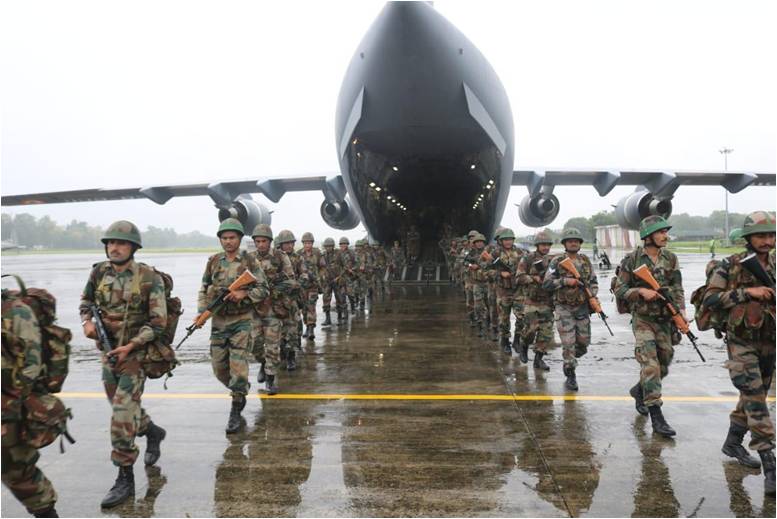
With the validation of the concept completed along the Western as well as, Eastern border, it is reported that the IBGs will start to become reality in a phased manner starting early 2020 after addressing all the gaps and shortcomings noticed during the above said exercises.
A typical IBG is likely to have the capability of mobilisation within 12-48 hrs and be able to launch a quick thrust across the border soon thereafter. The IBGs will be capable of performing offensive roles involving cross-border operations, as well as, defensive roles to withstand enemy attack. 9 It is likely to take 4-5 years for the so called ‘Ibgisation’ of the Indian Army.
Vulnerability profile of IBGs
IBGs by their very nature of composition and tasking (especially on the western front) will essentially undertake mechanised heavy formations launching swift thrusts across the border. These will be very lucrative, dense and ideal targets for the adversary’s air as well as anti-tank weapons.
The vulnerability of the IBGs from the air flank of the adversary will be very high. Basically the mechanised heavy components of the IBGs need to ward off the threat from three main type of threat vehicles. These are attack helicopters (AHs), state-of-the-art multi-role aircrafts and the Unmanned Aerial Systems (UAS) also called Unmanned Aerial Vehicles (UAVs).
As to AHs, the most deadly capability of these machines is their ability to fly in the nap of the earth remaining at ultra-low levels and suddenly appearing from behind the hills/obstacle systems to take on their targets at minimal notice thus beating the minimum essential time which defenders must have to detect, identify, track and fire their weapons to take on such targets. Another thing which makes AHs very deadly is their capability of carrying Precision Guided Munitions (PGMs) capable of pin point hits.
Pakistan Air Force (PAF), has a fleet of AH 1F Huey Cobras (2 squadrons 32 helicopters and the Chinese K-8 (1 squadron 28 Nos). Both these machines are top of the line in their avionics and strike capabilities. Recently the Huey Cobras held with PAF have been upgraded with Forward Looking Infra-Red (FLIR) night sights and TOW missiles thus making them all- weather capable.
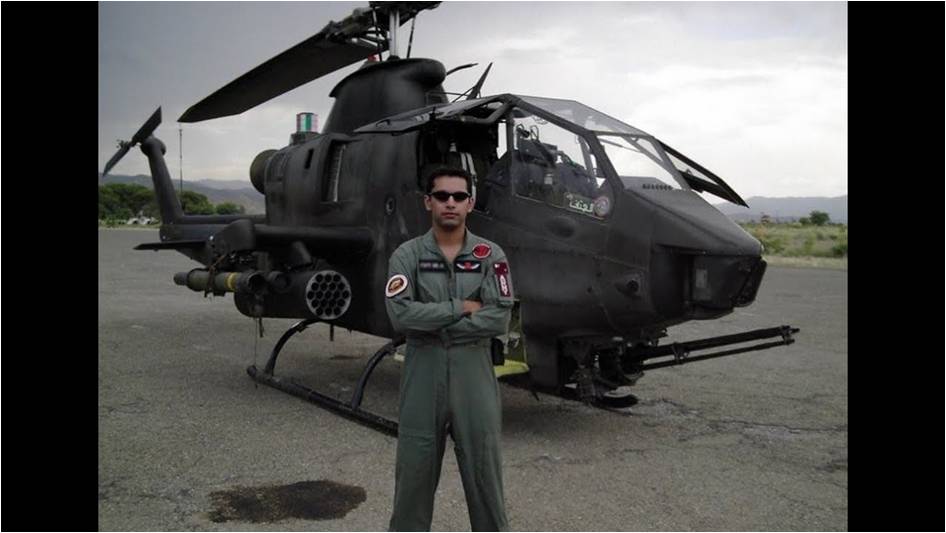
China of course is a very strong force in terms of AHs with its inventory populated by the several world class frontline machines, namely WZ-10, WZ-9 and Z-11, besides others.
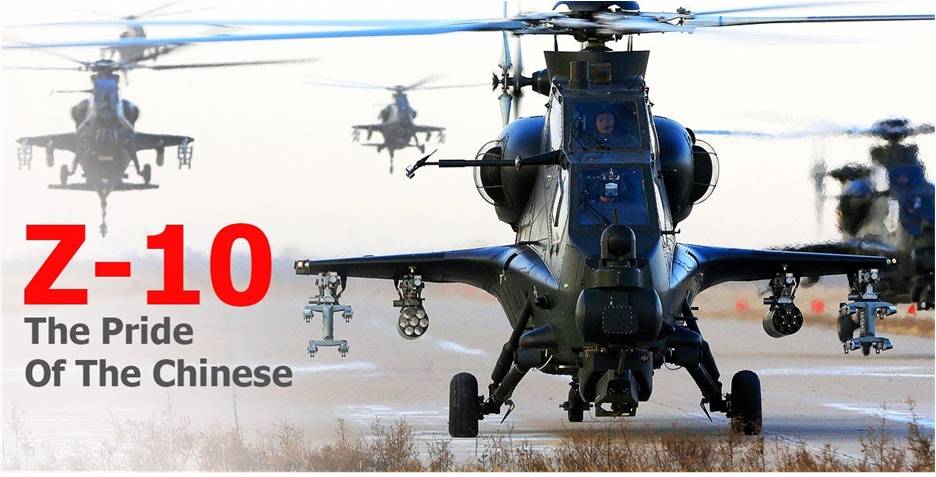
https://www.youtube.com/watch?v=1Cx5cusly3M
Z10 developed by the Changhe Aircraft Industry Corporation (CAIC) is primarily designed for anti-tank warfare missions complete with a fully integrated electronic warfare suite, dual fire control systems ( radar and electro-optical). It is all weather capable and carries the latest air to surface missiles. (HJ8, 9, 10 and AGM 114 Hellfire and air to air (TY90) 10. Other AHs have comparable capabilities.
As to frontline combat aircraft, both our potential adversaries are continuously revamping their air punch in terms of aircrafts and their munitions.
The main types of combat aircrafts held by PAF include the French Mirage V strike aircrafts , Mirage III interceptors, Chinese J-7 fighters, JF 17 multirole aircrafts and the US F-16 multirole strike aircrafts . It is reported that by 2025, PAF will mainly operate two multirole aircrafts namely F-16 and JF-17 and FC 20.
It is noteworthy to mention here that besides all the economic woes, the Pak MoD in its Year Book 2017-18 released in Sept 2019 has reported revamping in two areas namely air power and mechanised forces.
As to its air power, PAF, besides procuring some modern combat aircraft from US and China, has also acquired several cutting edge systems like PGMs for J-17 aircraft and Beyond Visual Range Missiles. Other known PGMs and Air to surface Missiles (ASMs) with PAF are Anti-Radiation Missiles (ARMs), laser guided bombs (LGBs), Maverick missile and AS 30 ASM useable with Mirages (III&V) and F 16 aircrafts. As regards the cruise missile, Nasr (HATF IX) is a solid-fuelled tactical ballistic missile developed as short range (60 km) high accuracy low yield battle field nuclear deterrent.
Pakistan is also likely to acquire some 30-40 J F31 stealth fighters from China thereby increasing its overall strike capability significantly. Also its mainframe, JF 17 aircraft is getting a revamp as regards its weaponry, night flying capability and electronic warfare package
China of course is targeting to be one of the world’s foremost air forces by 2020, made up of at least 1,000 modern combat aircraft. Taking pride in flying the first prototype of its latest Stealth Fighter (J-20) in Jan 2011, ostentatiously at a time when the US Secretary of Defence, Mr Robert Gates was in Beijing, the Peoples Liberation Army air Force (PLAAF) is steadily modernising. The Chinese air fleet is likely to include large quantities of Chengdu J-10 and Shenyang J-11 as mainstay platforms and JH-7A as the PLAAF’s backbone precision strike fighter. J-20 and the Russian Su-35 aircraft, along with its advanced IRBIS-E passive electronically scanned array radar system have entered operational service in 2018. This will significantly enhance PLAAF’s ability. Of greater concern also is the offensive capability of PLAAF in terms of PGMs and guided missiles.
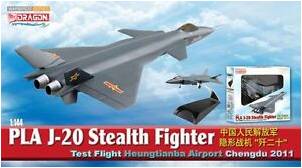
As to UAS, Pakistan operates a diverse fleet. The ones from foreign countries include ASN 105A, ASN 206 and B2B from China, Snipe Mk II from UK, Luna, Falcon and Seeker from Germany, Italy and South Africa, it’s indigenous fleet includes Bravo, Ababeel, Baaz, AWC Mk I & II, Vision I, Shaper, Vector, Huma 1, and Thunder.
Besides all the above the most noteworthy point is that in Sept 2015, Pakistan became the ninth nation in the world to develop and use an armed UAS named Burraq. It is armed with Barq, an ASM with pin -point precision11.
Firstly the indigenous Burraq is maturing ever since its first successful strike in Sep 2015 on a terrorist compound in the Shawal valley where it was reported that three high profile terrorists were killed12. Burraq has a range of 1000 km, its maximum speed is 215 km/h and it has a service ceiling is 7500 meters. It carries two Barq air-to-surface laser guided missiles13. Burq, which means lightening in Urdu, is single-stage missile capable of destroying both stationery, as well as, moving targets14.
It has also been reported that Burraq has been used to conduct several strikes on terrorist hideouts in the Tirah valley located in the Khyber Pakhtunkhwa province as a part of Operation Khyber.15 Burraq has placed in the hands of Pakistan, an effective combatised UAS which will be very effective weapon against the mechnaised assets of IBGs.
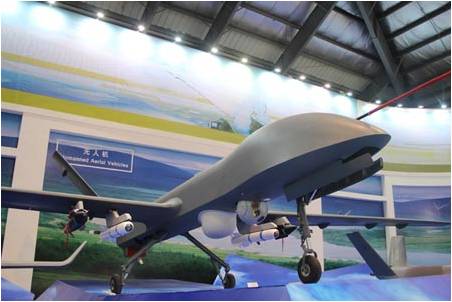
On the other hand, China has a very strong muscle in UAS. Its existing inventory of UASs includes Xianglong, WZ-9, Yi Long, CH-3, Anjian etc.
Chinese have shown impressive levels of innovation by building and flying unmanned vehicles of every conceivable design and genre. Innovators, both professionals as well as, greenhorns/debutants, have been allowed to run free and explore almost every UAS configuration.
Two other points are worthy of note in Chinese UAS development, namely, arming of the UAVs and equipping them with enabling sensor payloads. China has followed a logical process in arming its UAVs by first adapting existing air-to-surface weapons and then developing purpose-built small light weight munitions. In each case, the weapons involved are relatively new. Weapon-vehicle matching has been thoughtful. Some examples are Wing-Loong and CASIC UAS. In sum China packs a formidable punch in UAS capable of posing a significant threat to the IBGs16.
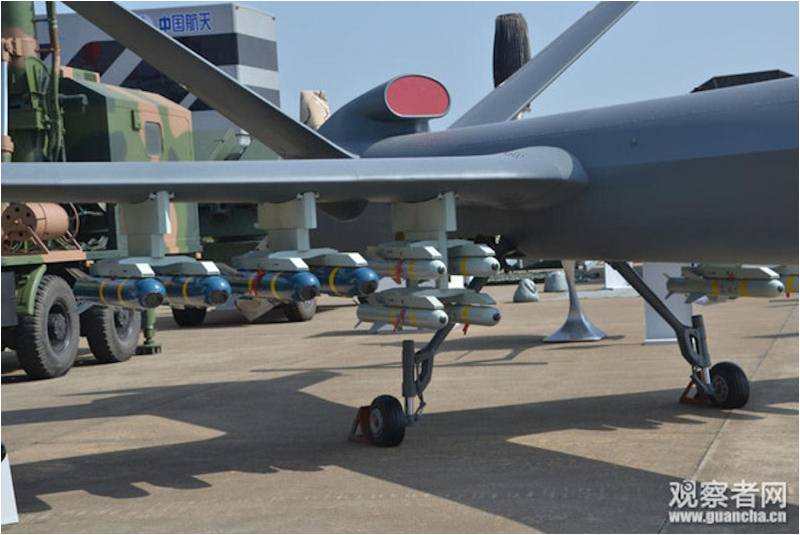
As to the vulnerability from surface forces, the mechanised assets in the IBGs will be vulnerable not only to a host of anti-tank weapons ( basically Anti-Tank Guided Missiles or ATGMs) but also, from enemy tanks firing Armour piercing/Armour Piercing Discarding Sabot or AP/APDS or fin-stabilised APDS rounds called APFSDS, or high explosive anti-tank (HEAT) rounds etc.
In case of surface threat it is to be understood that it is not the main threat vehicle (like the aircraft or AH or the UAS etc.) which is to be targeted, it is the munition (rocket, missile, AP/APDS/APFSDS/HEAT round) which is to be destroyed before it destroys the asset.
What is required to Counter the threat from the Air?
It is fundamental to note that no single air defence weapon, be it a gun or a missile will be a good fit to ward off the whole body of the air threat as described above. For that, an integrated family of air defence weapons must be deployed in a layered-and-tiered manner so as to produce a capability of inflicting continuous and successive fire on to the incoming threat as it draws near from long ranges.
This layered-and-tiered defence when combined with the associated Battle Management Command and Control System (BMC2) system is referred to as Integrated Air Defence System or IADS for short. The IADS must extend its effectiveness in a theatre grid in the tactical battle Area (TBA) under which the IBGs will operate. It will consist of aircrafts and Ground Based Air Defence Weapon Systems (GBADWS).
The GBADWS tailored for an IBG need to consist of three types of weapon systems:-
- Integral Gun Missile Systems.
- Very Short Range Air Defence System (VSHORADs).
- Surface to air Missiles(SAMs)
As the word goes the integral gun-missile systems are an integral part of the mechanised elements and move along with them in time and space. These are generally hybrid systems which feature both the guns and the missiles mounted on self-propelled chassis. Therefore, these are called Air Defence Gun Missile Self Propelled Systems abbreviated as ADGM(SP).
These weapons cover a range bracket of 0-6 km This is the zone where opportunity targets pop up suddenly, the ones who have avoided radar detection all along and have managed to appear at dead ranges suddenly from behind the obstacles/hills etc. to take a kill. Some examples of ADGM (SP) systems are Schilka, Tunguska and Pantsyr from Russia, Gepard from Germany, Artemis 30 from Greece, Biho 30 from Korea etc.
Indian Scene and what Needs to be Done?
We have some Schilka ADGM (SP) and very limited quantities of Tunguska systems ( numbers not mentioned). Following needs to be done:-
- Our Schilkas are of very old vintage (seventies).These are currently being upgraded to take on the current threat. However the upgrade process only covers only a portion of the existing inventory and not the entire holdings.
- Keeping in mind the threat, it is imperative that the entire inventory of Schilka holdings are upgraded. Also the upgrade process, which is currently at a pace slower than desired, needs to be expedited.
- The above upgrade involved a foreign player. It is for the concerned Public Sector Undertaking (PSU) to achieve a total ‘indigenous hold’ on the entire upgrade suite, be it sensors, electronics or electro-optical fire control system. There must not be a perpetual dependence on a foreign player.
- The current holding of Schilkas and Tunguska ADGM (SP) systems can hardly meet the requirement of the field force IBGs. To address the existing voids more ADGM (SP) weapons will be required.
- Ministry of Defence (MoD), at the culmination of a procurement process that ran for 8-9 years has finally selected the South Korean made Hanwha K 30 Biho (Flying Tiger) highly mobile short range Ground Based Air Defence weapon system as future ADGM (SP) system17.
- It is imperative that the Biho process must be expedited as this weapon system is critically required to fill the ADGM (SP) voids in the IBGs especially in the tank country on the western border.
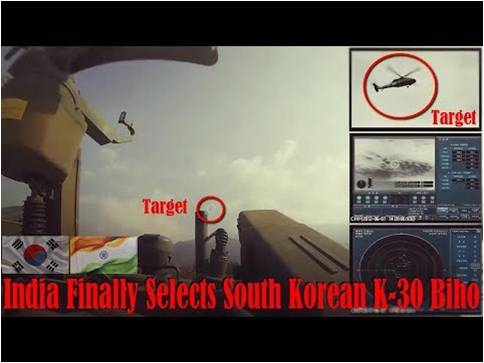
In addition to the ADGM (SP) systems which remain integral to the manoeuvre force, there is a requirement to extend the weapon capability to the areas in front or the flanks of the IBGs where targets could be taken on at longer ranges.
In order to take on such threats, Very Short Range Air Defence Systems (VSHORADS), basically implying man-portable missiles (6-10kms range) must be proliferated in the Tactical Battle Area of the IBG manoeuvre forces. Such weapons are not integral to the mechanised columns but are deployed with reference to the same either along the most likely avenues of approach of adversary’s threat vehicle, or wait to take on their prey along such bottlenecks, defiles, passes from where the air threat vehicles must pass to press home their attack.
Indian Scene and What Needs to be Done?
We hold Igla 1M as VSHORAD man-portable missiles. There are voids in our holdings (numbers not mentioned). In order to address the voids there is an ongoing tri-service case since 2010 seeking to buy 5500-6000 missiles and 800 launching mechanisms at an approximate cost of 27000 crores. Three vendors have been tried out, namely M/s Saab Sweden with their RBS 70 NG (NG meaning new generation), MBDA (France) with their Mistral and the Russians (Rosoboronexport) with Igla-S.
The Defence Acquisition Council (DAC) in Nov 2018 has finally selected the Russian Igla-S system for procurement, being the lowest bidder18. Following needs to be done:-
- This is one procurement case that needs to be expedited like no other.
- Surprisingly while the DRDO under the Indigenous Guided Missile Development Programme (IGMDP) that started way back in 1982-83, attempted to develop short and medium range SAMs for air defence, it never attempted a VSHORAD.
While the above past reality cannot be changed, there has been some positive movement recently, in Jul 2019 when it was reported that Bharat Dynamics Limited (BDL) is planning to set up a VSHORAD missile manufacturing capability in Amravati Mahrashrtra at a cost of Rs. 300 Crs.
Also, there is an ongoing Memorandum of Understanding (MoU) between BDL and M/s Thales of France for the strategic transfer of technology for the Starstreak VSHORAD from UK19.
The answer therefore lies in the twin track approach. In that, on one hand, procurement of Igla-S must be expedited, while on the other, all efforts must be made to get onto the route of acquiring indigenous capability of making VSHORADS.
The bottom line is, that the IBGs cannot be denied their fair share of VSHORADS.
While the ADGM (SP), as well as, VSHORADS look after the integral, as well as, very short range requirements of addressing the onslaught of the adversary’s air threat, the mainframe weapon to provide mobile air defence cover to the manoeuvre forces is the Short Range SAM system.
Besides the opportunity targets addressable by guns and man-portable missiles described earlier, the main threat punch will be delivered by fully packaged threat vehicles delivering smart and intelligent ammunition, guided missiles, rockets, anti-radiation missiles etc. from long stand-off ranges.
To take on this threat, weapons with sufficient range and altitude capability (20-20 km range 15000-30000 ft altitude) are required. Besides the range and altitude, such weapons must be able to move in time and space with the mechanised elements of the IBGs, be able to search and track their targets while on the move cross- country and be able to fire on selected targets immediately on halt. The SAMs that carry such a capability are called Quick Reaction SAMs or QRSAMs.
India’s Scene and What Needs to be Done?
While we hold some weapons in the QRSAM mould but these cover a very small range bracket which are deficient in addressing the main threat facing the IBGs.
While the case to procure the QRSAM is in progress since 2007, on the global route, the good news is that the Defence Research and Development Organisation (DRDO) has made good progress on the development of the indigenous QRSAM called QRSAM (I).
Several successful tests of this missile by DRDO along with the Production agency Bharat Electronics Limited (BEL), have been completed. The most resent one was carried out 17 Dec 2019.
It is for the DRDO and BEL move expeditiously to offer the system as a fully GSQR compliant system for induction in the Indian Army.
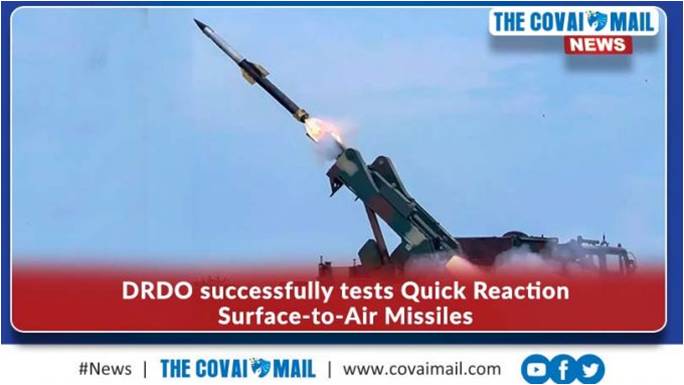
It is for the MoD to gear up the procurement cycle by asking the user to take the system as developed through the user trial process leading to its induction in the Service subject to its being found compliant.
This involves a minimum two year cycle. The same needs to start immediately in order to ensure that by the time the IBGs reach operationalisation status, the induction of QRSAM (I) is also ready to get inducted.
Vulnerability from Surface Weapons
As stated besides the air flank, another window of high vulnerability of the IBGs will be from surface weapons be it ATGMs or fire from adversary’s tanks or fire from other anti-tank weapons like rockets, rocket propelled grenades, recoil less anti-tank guns etc.
Two types of protection system will be required for our tanks and other mechanised forces. These are active systems and passive systems .The same are very briefly enumerated.
In an Active Protection System (APS) there are basically two elements; 1. An electronic and (or) an electro optical surveillance system which detects the incoming threat and 2. The kill measures to take on the detected threat and destroy it before it impacts on the tank/vehicle.
Tremendous amount of technological advances are taking place in both the above components. The electronic and optical surveillance systems are becoming very precise. For instance, the Israeli trophy APS has a 360 degree top of the line Active Electronically Scanned Array (AESA) Radar while the APS made by Russia, called the Arena system, has a Doppler radar for surveillance, target detection and tracking. Another Israeli APS made by M/s ELBIT, called the Iron Fist, has an AESA radar backed with passive Infrared (IR) Detection system.
The kill measures can be hard or soft kill. The hard kill penetrators aim to physically destroy the incoming warhead away from the tank by causing it to explode prematurely, the soft kill measures aim to interfere with the guidance system of the incoming warhead by using decoys, or countermeasures that can mislead the warhead or interfere the track of the radar guiding the warhead on the target.
The passive system includes a large variety of reactive armour that explodes on impact with threat and aims to defeat the warhead penetrator of the anti-tank weapon impacting on the tank
What is Indian Scene and what needs to be done?
Indian indigenous tanks like Arjun and Vijyanta (upgraded under Project Bison) have explosive reactive armour or ERA. As explained, this armour explodes on impact and damages the penetrator by breaking its penetrating rod or defeats penetration by forcing a greater path length for penetration. Such an armour is called Kanchan armour. It has been developed by Defence Metallurgical Research Laboratory Hyderabad.
APS as stated, is the active protection system. While the earlier T series of Russian tanks held by the Indian Army T 55, T 72 etc. had varied degrees of armour protection, in the latest acquisition of 464 x T-90 “Tagil’ tanks at a cost of 13, 448 Crores, the MoD especially opted for a stand-alone APS system.
Two systems were trial evaluated, the Russian Arena system and the Israeli Trophy system. Arena system was withdrawn from the competition at the technical evaluation state, while the Trophy system could not go through being a single vendor case20. APS is now being developed as a Make Project.
It is absolutely imperative that the APS under the Make system must be put on a time bound schedule, keeping the option of procurement for the global route always open. This is because ‘Vulnerability cannot await an endless development cycle’.
That explains what is required to ensure that the IBGs SURVIVE TO FIGHT ANOTHER DAY.
Endnotes
- “Indian Army’s new Integrated Battle Groups to be introduced in early 2020”, at www.theprint.in. Accessed on 11 Dec 2019.
- “India has no cold start doctrine, ”at www.economictimes.indiatimes.com. Accessed on 19 Dec 2019
- “What is India’s Cold Start Military Doctrine,” at www.economist.com
- ibid
- “How Indian Army’s Integrated Battle Groups are preparing for FutureWars,” at www. Financial express.com. Accessed on 20 Dec 2019.
- “Integrated Battle Groups on Pakistan China Border soon,” at www.economictimes.indiatimes.com. Accessed on 20 Dec 2019.
- ibid
- ‘The new strike strategy, ”atwww.indiatoday.in. Accessed on 20 Dec 2019.
- 1 ibid.
- ‘CIACWZ10,”at www.en.wikipedia.com. Accessed on 21 Dec 2019.
- “Changing contours of air threat and its implications in our scenario,” at www.vifindia.org. Accessed on 31 Dec 2019
- "Pakistan surprises many with first use of armed drone," at www.defencenews.com. Accessed 22 Dec 2019.
- "NESCOM Burraq Unmanned Combat aerial Vehicle," at www.militaryfactory.com. Accessed 22 Dec 2019..
- "Pakistan to show missile muscle," at www.defwnce .pk. accessed 22 Dec 2019.
- 14 ibid
- 11ibid
- "Hanwha K -30 Biho mobile air defence system for Indian Army," at www.armyrecognition .com. accessed 22 Dec 2019.
- “Russia to bag $1.5 billion deal for air defence missiles,” at www.economictimes.inditimes.com. Accessed on 22 Dec 2019.
- “Missile manufacturer BDL to have 25000 crore orders,” at www.eonomictimes.indiatimes.com. Accessed on 22 Dec 2019.
- “India’s Future Main Battle tank Will Come without Life Saving Active Protection System,” at www.ndtv.com. Accessed on22 Dec 2019.
(The paper is the author’s individual scholastic articulation. The author certifies that the article/paper is original in content, unpublished and it has not been submitted for publication/web upload elsewhere, and that the facts and figures quoted are duly referenced, as needed, and are believed to be correct). (The paper does not necessarily represent the organisational stance... More >>
Image Source: https://qph.fs.quoracdn.net/main-qimg-7d73412c91a8170d0365b88c7798a947









Post new comment